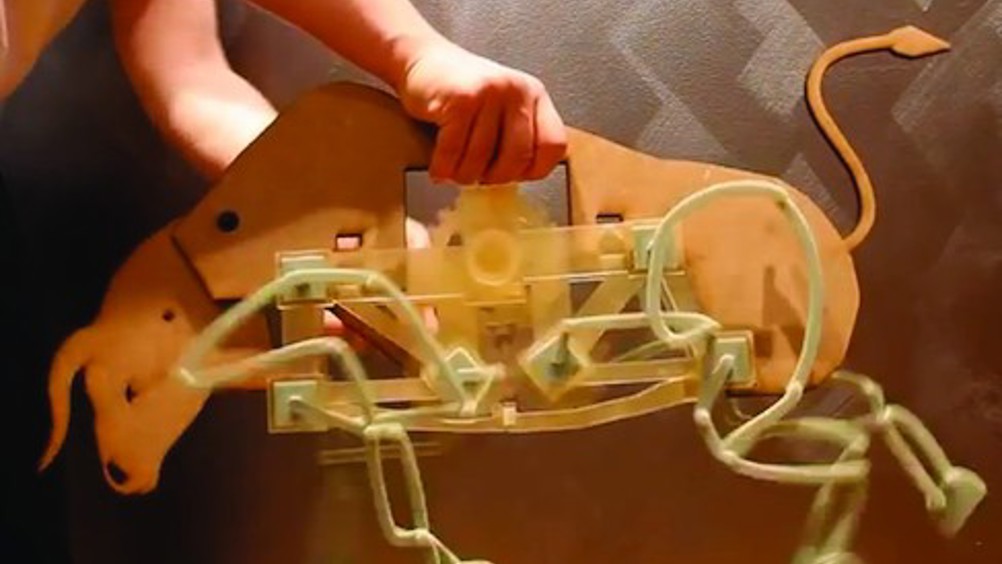Mechanical motion added to 3D-printed creations
Two new computational design methods developed by Disney Research Zurich are making it possible for anyone to bring 3D-printed creations to life by adding mechanical motion.

The methods are said to apply to two specific types of characters – planar mechanical characters that are similar to shadow puppets, and linkage-based characters formed by networks of rigid links and hinged joints. In either case, the researchers have developed tools that lead the user in designing mechanisms that will achieve a desired cyclical motion.
The same team of researchers, including scientists from Disney Research Zurich, ETH Zurich and Columbia University, developed both methods and will present them this week at ACM SIGGRAPH 2014, the International Conference on Computer Graphics and Interactive Techniques held in Canada.
‘The machinery for fabricating personalised mechanical toys, artefacts and even robots is becoming widely available, thanks to 3D printing,’ said Bernhard Thomaszewski, a Disney Research Zurich associate research scientist. ‘But without the assistance of specialized software, designing such animated characters is a virtually impossible task for casual users.’
In July 2014 the team presented ChaCra, their interactive system for designing planar mechanical characters. These are inspired by shadow puppets, which are rigidly articulated and whose motion is controlled through a number of rods. In these characters, however, the rods aren’t controlled by a puppeteer behind a screen, but are animated by a single actuator.
Register now to continue reading
Thanks for visiting The Engineer. You’ve now reached your monthly limit of news stories. Register for free to unlock unlimited access to all of our news coverage, as well as premium content including opinion, in-depth features and special reports.
Benefits of registering
-
In-depth insights and coverage of key emerging trends
-
Unrestricted access to special reports throughout the year
-
Daily technology news delivered straight to your inbox










Water Sector Talent Exodus Could Cripple The Sector
Well let´s do a little experiment. My last (10.4.25) half-yearly water/waste water bill from Severn Trent was £98.29. How much does not-for-profit Dŵr...